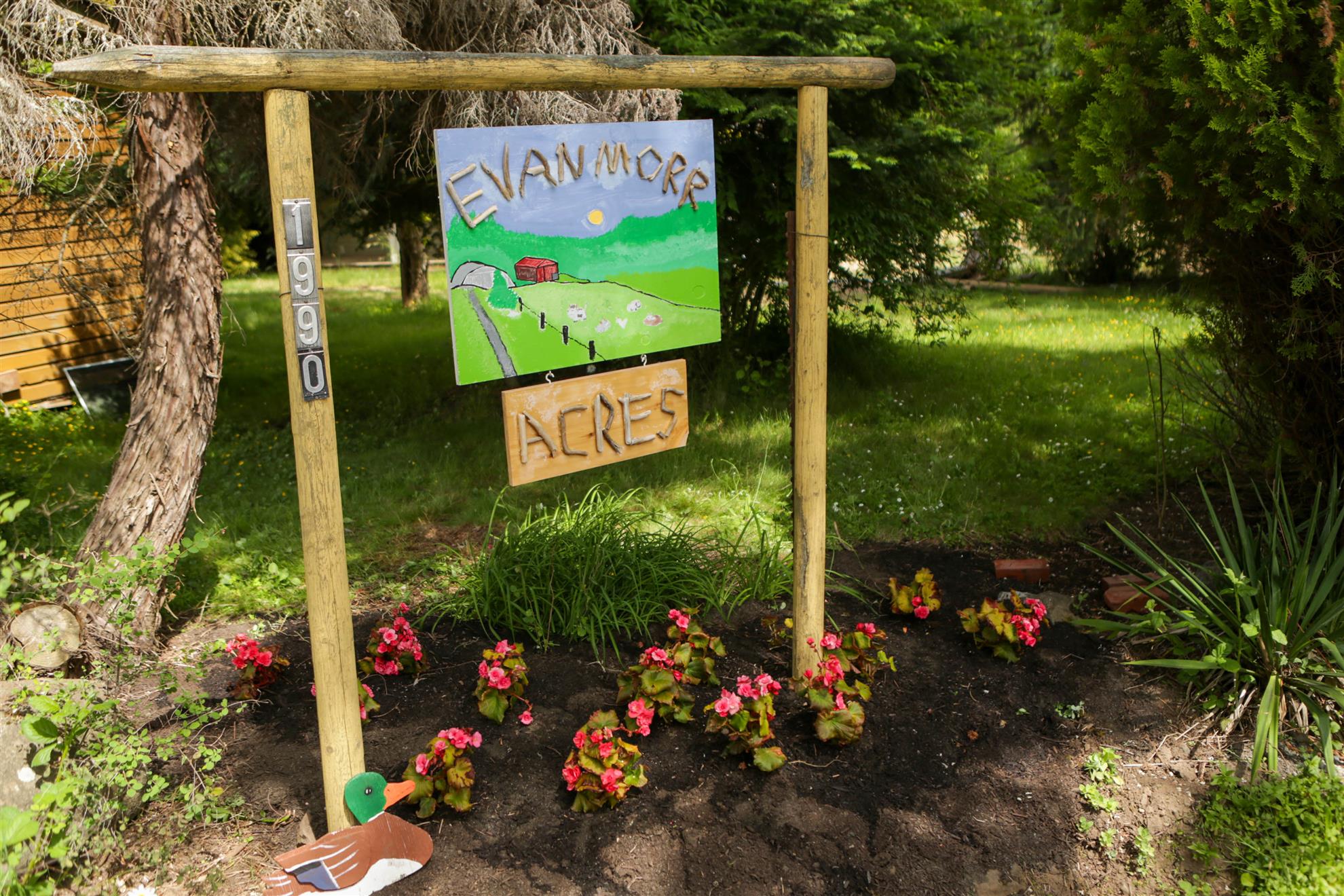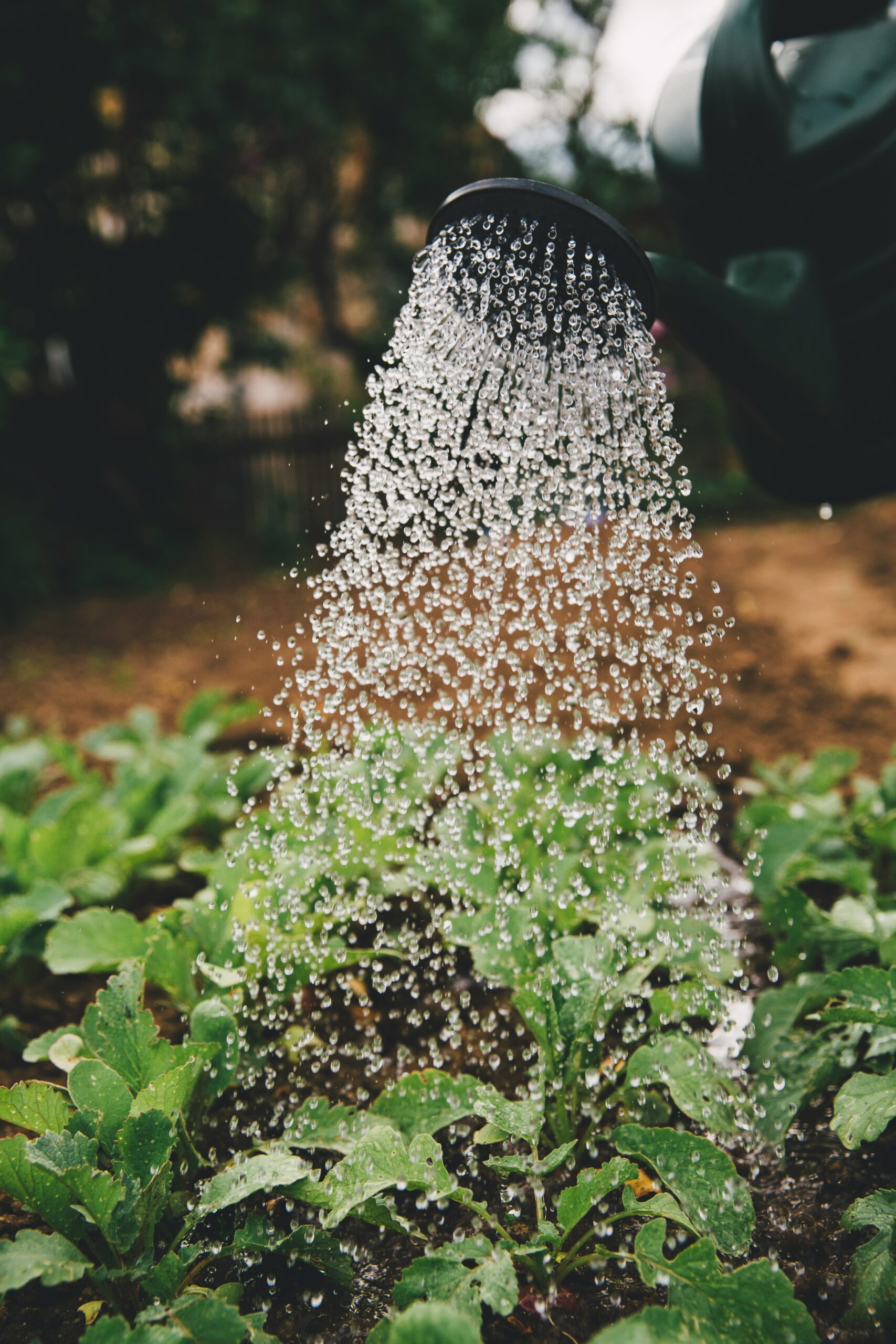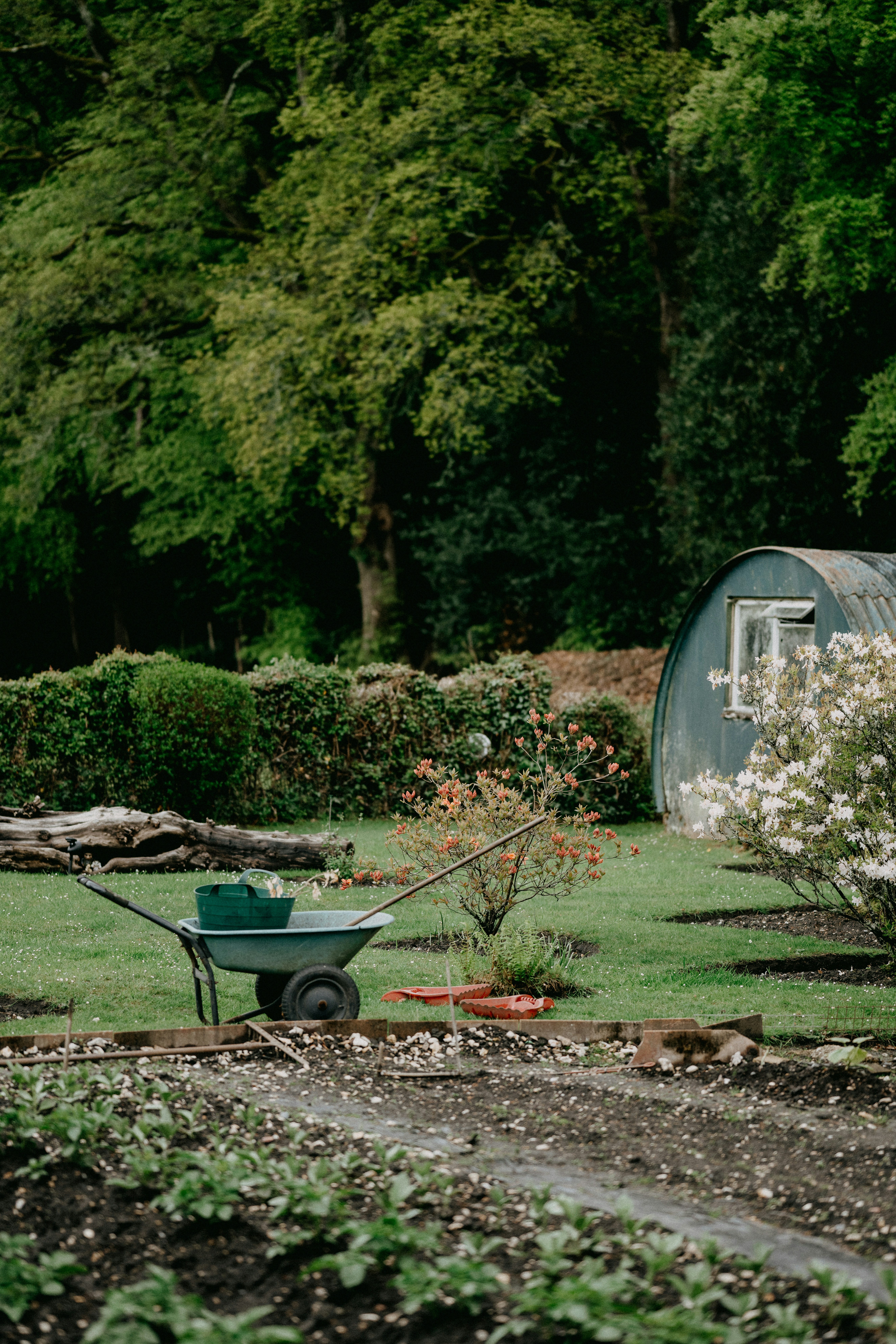When I talk about Horticultural Therapy with someone new to the field, I’m usually met with excitement and curiosity. People get it. Many feel the pull toward nature-based work or interventions. But then come the practical questions: “How do you convince stakeholders this is worth funding?” “How do you demonstrate the value?” “How can someone actually build a career in this field?”
The truth is, horticultural therapy isn’t just about feel-good moments in a garden (though those matter too). It’s grounded in decades of research, theory, and evidence that explain why and how nature-based interventions support healing across all domains of wellness.
But here’s an important caveat: while Western research began offering modern evidence for nature-based therapies in recent decades, this knowledge is not new. It is ancestral knowledge held by Indigenous Peoples around the world for thousands of years. The understanding that nature heals, restores, and connects us is deeply rooted in Indigenous wisdom and practice, long before it was ‘published’ or formalized into Western therapeutic frameworks.
As practitioners, we must hold both truths: we pursue evidence-based theories to advocate within systems that demand research, and we recognize and honor that these “discoveries” are, in many ways, a reclaiming of knowledge that was never lost, but rather ignored or dismissed by colonial structures. If you want to explore this tension more deeply, I highly recommend the resource The Roots of Practice: An Anti-Colonial Critical Discourse Analysis of Western Nature-Based Mental Health Therapies.
Understanding the foundational theories shared below has deepened my own practice immeasurably. They’ve helped me articulate the “why” behind what I do, design more intentional programs, and advocate for the legitimacy of this work within clinical and community settings.
So let’s explore six key theories that underpin horticultural therapy. Whether you’re an HTR, a student, or simply curious about the field, I hope these frameworks resonate with you the way they have with me.
Attention Restoration Theory (ART): Nature Restores Mental Energy
Attention Restoration Theory, developed by Rachel and Stephen Kaplan, addresses something many of us feel daily: mental fatigue. When our directed attention, the kind we use to focus on tasks, filter distractions, and make decisions, becomes depleted, we struggle to concentrate.
“Mental fatigue drains our ability to concentrate. Nature offers the antidote.”
According to ART, natural environments allow our directed attention to rest. Instead of demanding focus, nature engages our attention effortlessly through what the Kaplans call “soft fascination”, the movement of leaves, the sound of water, the changing light through branches (Kaplan, 1995; Kaplan & Kaplan, 1989).
In practice, this means:
- Natural environments allow our directed attention to rest
- Viewing or spending time in nature improves concentration
- Even brief nature exposure can restore cognitive function
I see this constantly in my work. A participant who arrives at a session feeling scattered or overwhelmed often leaves more grounded, more present. That’s attention restoration.
Stress Reduction Theory (SRT): Nature Calms the Nervous System
While ART focuses on cognitive restoration, Stress Reduction Theory (developed by Roger Ulrich) is concerned with emotional and physiological recovery. SRT suggests that natural environments, particularly those with vegetation and water, trigger our parasympathetic nervous system, promoting stress recovery (Ulrich et al., 1991; Ulrich, 1983).
The theory has evolutionary roots: vegetation and water features provided early humans with cues to safety, food, and resources. Our bodies still respond to those cues today, even when we’re not consciously aware of it.
What this looks like in horticultural therapy:
- Vegetation and water features signal safety and resources
- These cues are rooted in evolutionary survival
- Natural settings help us recover from stress faster
Whether it’s the simple act of watering plants or sitting near a garden pond, these moments aren’t just peaceful, they’re physiologically restorative.
Relational Restoration Theory (RRT): Nature Strengthens Connections
Relational Restoration Theory extends ART and SRT by highlighting something I’ve witnessed again and again: restoration isn’t just individual, it’s social.
RRT, furthered by Terry Hartig, theorizes that natural environments don’t only provide psychological benefits for individuals; they also improve the quality of social interactions and relationships. These environments facilitate social support, shared experiences, and collective restoration (Hartig, 2021).
Think about it: when was the last time you had a meaningful conversation while walking through a park? Or worked alongside someone in a garden and felt a sense of camaraderie without needing many words?
In horticultural therapy, this means:
- Natural environments enhance social interactions
- Shared nature experiences foster community bonds
- Collective restoration happens through connection
I have observed this theory over and over again. There’s something safe and approachable about HT/TH sessions that can draw out social connection in unique ways- whether it’s through shared wonder, a shared focus, collaboration, or reminiscing, these social connections seem more attainable around a nature activity or setting.
Biophilia Hypothesis: Our Innate Draw to Nature
The Biophilia Hypothesis, introduced by Edward O. Wilson in 1984, is elegantly simple: we are biologically wired to seek connection with nature and other life forms.
This isn’t learned behavior: it’s intuitive and evolutionary. For most of human history, our survival depended on our relationship with the natural world. We needed to understand plants, animals, seasons, and ecosystems.
“We are biologically wired to seek connection with nature and other life forms.”
But modern life has largely disconnected us from this innate need. The built environment, concrete, screens, artificial light. pulls us further from what our bodies and minds instinctively crave.
What biophilia teaches us:
- This connection to nature is intuitive and evolutionary
- Modern built environments disconnect us from this need
- Reconnecting with nature fulfills a fundamental human drive
Horticultural therapy, in many ways, is about returning. It’s about creating opportunities for people to reconnect with what they’ve been missing, often without even realizing it.
‘Horticultural therapy, in many ways, is about returning.’
Hortiphilia: The Love of Gardens
While biophilia speaks to our broad connection with nature, hortiphilia narrows the focus to something more specific: the innate human inclination to interact with, manage, and cultivate nature (Shoemaker, Relf, Park, & Dorn, 2021).
Hortiphilia recognizes that there’s something uniquely satisfying about active engagement with plants, not just observing them, but planting, tending, pruning, harvesting.
In horticultural therapy, hortiphilia shows up as:
- Extending biophilia to horticultural settings
- Active engagement with plants providing unique benefits
- Gardening satisfying our intrinsic need to nurture and create
I’ve seen participants who struggle with feelings of purposelessness light up when given responsibility for a plant. The act of nurturing something living, and watching it respond, can be profound.
Place Theory: Attachment to Therapeutic Spaces
Finally, Place Theory reminds us that physical environments shape our sense of self and wellbeing. People form deep emotional, psychological, and even spiritual bonds to specific places. These bonds influence identity, wellbeing, and behaviors (Altman & Low, 1992; furthered by Scannell & Gifford, 2010).
“People form deep emotional, psychological, and even spiritual bonds to specific places.”
In horticultural therapy, gardens become more than just settings, they become places of meaning. Participants develop place attachment, a sense of belonging that enhances therapeutic outcomes.
What this looks like:
- Gardens become meaningful and remembered places for healing
- Sense of belonging to a space can enhance therapy outcomes
- Place identity develops through repeated engagement
I’ve worked with individuals who return to the same garden bed year after year, who remember which corner they planted tomatoes in, who feel ownership and pride in “their” space. That attachment can offer a lot of meaning and motivation, and can become very important for individuals who are otherwise struggling with an understanding of ‘place’, such as those with cognitive impairment or trauma.
Bringing It All Together
These six theories- ART, SRT, RRT, Biophilia, Hortiphilia, and Place Theory- aren’t separate silos. They overlap, interact, and reinforce one another. Together, they form a section of the solid foundation for understanding why horticultural therapy works.
When someone asks me, “But how does gardening help?” I can point to decades of research showing that nature restores attention, calms the nervous system, strengthens relationships, fulfills evolutionary needs, engages our desire to nurture, and creates meaningful places.
And honestly? That still only scratches the surface.
What About You?
Do you have other theories that inform your practice? I’d love to hear them. The field of horticultural therapy is constantly evolving, and I believe we grow stronger when we share knowledge, perspectives, and curiosity.
If you’re interested in diving deeper into the theoretical foundations of HT, or if you’re looking for support in developing evidence-based programs, I offer courses and mentorship designed for emerging and practicing HTRs. These mentorship or consultation opportunities can also include ways to communicate these theories in pitches for new contracts or presentations. You can explore those [here] [insert link].- consultation calls or clinical skills in HT course.
And if you found this helpful, feel free to share it with others who might benefit. Let’s keep building this field together.
References
Altman, I., & Low, S. M. (Eds.). (1992). Place attachment. Springer.
Chui, C. The Roots of Practice: An Anti-Colonial Critical Discourse Analysis of Western Nature-Based Mental Health Therapies (Doctoral dissertation, Toronto Metropolitan University).
Hartig, T. (2021). Restoration in nature: Beyond the conventional narrative. In A. R. Schutte, J. C. Torquati, & J. R. Stevens (Eds.), Nature and psychology: Biological, cognitive, developmental, and social pathways to well-being (pp. 89–108). Springer.
Kaplan, R., & Kaplan, S. (1989). The experience of nature: A psychological perspective. Cambridge University Press.
Kaplan, S. (1995). The restorative benefits of nature: Toward an integrative framework. Journal of Environmental Psychology, 15(3), 169–182.
Scannell, L., & Gifford, R. (2010). Defining place attachment: A tripartite organizing framework. Journal of Environmental Psychology, 30(1), 1–10.
Shoemaker, C. A., Relf, P. D., Park, S. A., & Dorn, S. (2021). Horticultural therapy. In S. Söderback (Ed.), International handbook of occupational therapy interventions (3rd ed., pp. 315–323). Springer.
Ulrich, R. S. (1983). Aesthetic and affective response to natural environment. In I. Altman & J. F. Wohlwill (Eds.), Behavior and the natural environment (pp. 85–125). Springer.
Ulrich, R. S., Simons, R. F., Losito, B. D., Fiorito, E., Miles, M. A., & Zelson, M. (1991). Stress recovery during exposure to natural and urban environments. Journal of Environmental Psychology, 11(3), 201–230.
Wilson, E. O. (1984). Biophilia. Harvard University Press.





